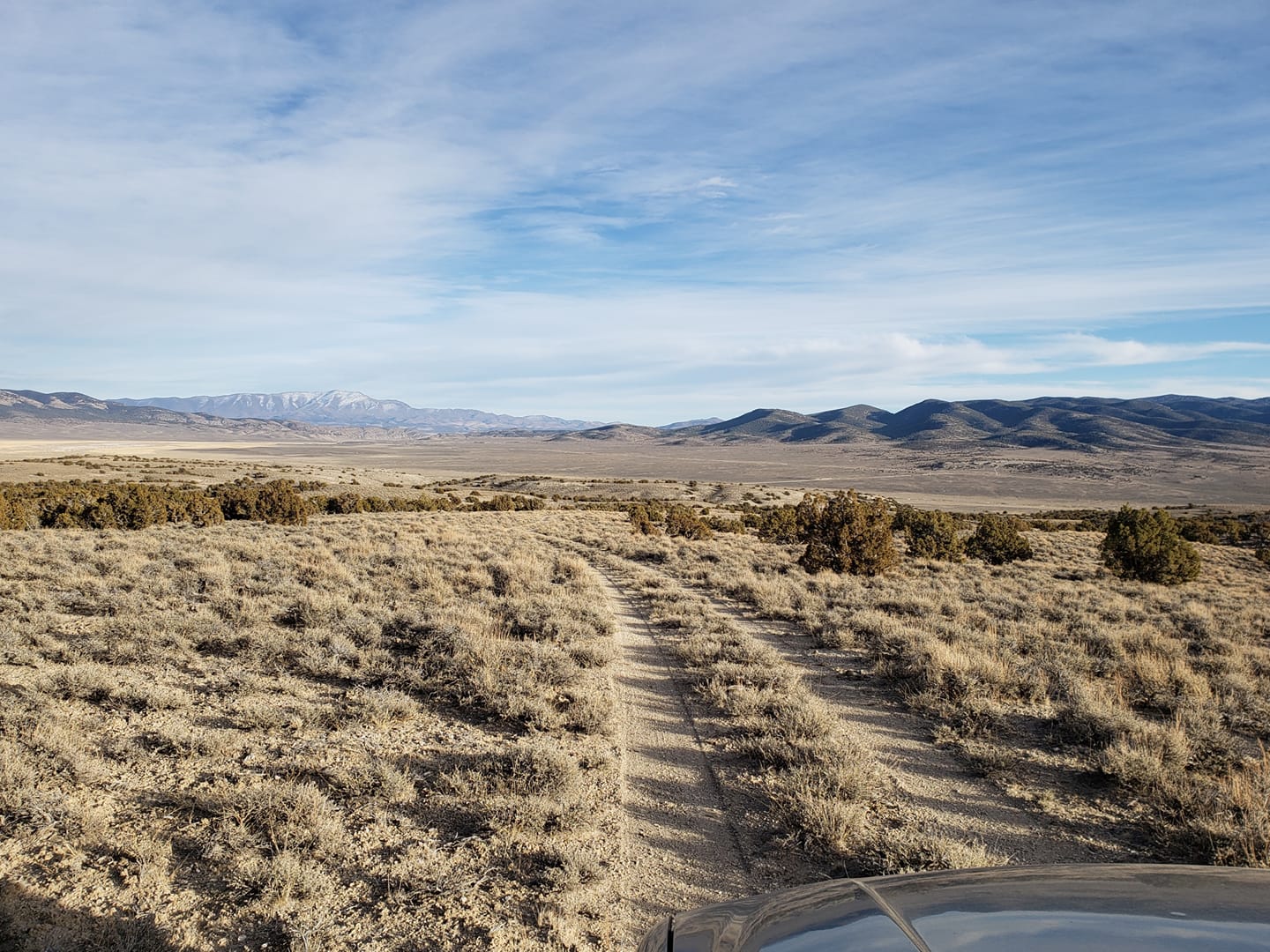*** GENERAL MOLY NEWS ***
***BREAKING NEWS*** General Moly (GMO) stock surges on high volume trading up 7.4% to $1.88 per share. 1,346,652 shares - 6.5 times 90-day average volume.
General Moly Announces Implementation of Cost Reduction Program While Actively Pursuing Mt. Hope Financing (9/09/2013)
General Moly Announces Preliminary Injunction Motion Denied, Without Prejudice, Related to Mt. Hope Record of Decision Appeal (8/26/2013)
A very detailed General Moly briefing for investors on the status of the Mt. Hope molybdenum project: General Moly Investor Presentation
See earlier March 22 and March 29 reports for a full chronology of the $665 million Hanlong loan suspension.
Latest Nevada Gas Prices (click this link)
My latest Kitco commentary: Copper & Gold – The Long Ride from Lehman Brothers (10/08/2013)
Paintings by Mariana Titus, The Three Anas & The Three Moon Anas, are presently at Lafitte Guest House & Gallery, New Orleans
Friday's morning's prices used for this morning's analysis (Comex gold has since slumped further, down $34.1/oz at $1,335.2/oz):
COMEX Gold price = $1,353.0/oz (December contract most active)
COMEX Silver = $22.640/oz (December)
COMEX Copper = $3.3345/lb (December)
NYMEX WTI crude = $105.90/bbl (October)
ICE Brent crude = $109.29/bbl (November)
Eureka Miner’s Gold Value Index© (GVI) = 84.20 (gold value is trading at a discount to oil and and a slight premium to copper)
Value Adjusted Gold Price© (VAGP) = $1,342.7/oz
COMEX - VAGP = $10.33/oz; gold is trading at a vanishing net premium to key commodities.
General Moly (GMO) = $1.64 up 1.73%
Barrick Gold (ABX) = $17.58 down 0.17%
Newmont Mining (NEM) = $28.22 down 0.05%
Gold has had a wild ride this week getting a solid boost higher with Wednesday's U.S. Federal Reserve announcement of "no taper" to a broad sell-off this morning. Comex gold went from a pre-announcement intraday low of $1,291.5 per ounce to close Thursday at $1,369.3 - a nearly $78 move up. Today, almost half of that has been given back with gold now trading at $1,335.2 per ounce.
We can expect more volatility ahead as I explain in my input to Kitco's Weekly Gold Survey (below) and latest commentary, Gold Trapped In A Value Wedge.
Although I expect to see lower prices later this year and into the first quarter of 2014, the contentious debt debate in Washington could give the yellow metal some safe-haven "levitation." I believe moves higher will be capped around $1,450 per ounce. Later this year gold could revisit the $1,250-level.
Many moons ago the Eureka Miner used this seesaw photo to illustrate the plight of gold price then; the same metaphor and image is appropriate today.
Last week we wrapped up an eight-part summer series on Mt. Hope. You can access the series with the links in the column to your right. We'll be back with a second series on Mt. Hope later this year or next. The second road trip is longer (110 miles) and will include ranches of early settlers, a second portion of the Pony Express Trail and a challenging section of the old Eureka-Palisade Railroad. The headline photo today is of the Damele family's Willow Creek Ranch looking north to Pine valley - one of the many ranches we will visit.
Loop # 1 (65 miles) was a fun trip - I hope you enjoyed the Mt. Hope journey in space and time and look forward to the next trip too!
General Moly (GMO) got a nice 5% pop today to $1.84 per share. Gold miners are down on plunging gold price: Barrick, $18.88 and Newmont, $28.43 per share.
Molybdenum Prices
Spot moly oxide prices have stabilized above the $9 per pound-level. Here are the latest numbers compliments of moly benchmark miner Thompson Creek (TC):
Metals Week Weekly Average: US$9.475 as of September 13, 2013 (updated weekly)
Ryan's Notes Average: US$9.852 as of September 17, 2013 (updated twice weekly)
The London Metal Exchange (LME) futures contracts are above spot prices on the 3-month contract but fallen below $10 per pound on the longer contract. Remember that this is a thinly traded futures market and contract prices may reflect developments in Europe more than the global spot price averages above.
3-month seller's contract $21,000 per metric ton ($9.526 per pound)
15-month seller's contract $21,720 per metric ton ($9.852 per pound)
The Colonel's Gold, Silver & Copper Prices for Next Week
Here is my weekly input to the weekly Kitco Weekly Gold Survey:
09/20/2013
(10:37 AM CT)
Q. Where
do you see gold’s price headed next week, up, down or unchanged?
A. Up. My target
price is $1,360 per ounce.
Q.
Why?
A.
U.S. dollar gold price got a boost from the FOMC “no taper” announcement and
held its ground with the S&P 500 as equities set new record highs. Gold and
copper both recovered value relative to oil which has pulled back with easing
tensions in the Middle East and improving output from Libya.
However
I believe as QE3 carries on, oil and copper will get more boost from easy money
than gold so gold value erosion relative to real things will continue. This
morning gold has recovered a $10 per ounce premium relative to a commodity
basket of oil, copper & silver. Even if gold can recover a $50 premium, I
don't think the yellow metal will get above $1,450 per ounce in the near term
as explained in my latest commentary, Gold Trapped in a
Value Wedge.
The
wild card is the actions of the U.S. Congress in the current debt debate.
Expectations of a government shut-down could give gold a safe-haven transient shot
to higher levels. The poor start to these negotiations may rally support for
the yellow metal as early as next week so my target is up from this morning’s
trading at $1,360 per ounce (the geometric mean of the August high and
September low).
Once the headlines
clear, the yellow metal should trade at a discount to key commodities limiting
future advances and may presage a return to much lower prices later this year
or by Q1 2014.
Based on prior quantitative easing cycles, this trend must reverse, “before a
serious recovery in gold price is possible – typically, after or near the end
of each QE program.”
For
$1,360 per ounce gold we can expect to see silver in a statistically bounded range*
of $22.4-$23.7 per ounce; and copper in a range of $3.11-$3.40 per pound. Silver
is expected to have a negative bias with respect to a range mean of $23.058 per
ounce; copper, a positive bias with respect to a mean of $3.2542 per pound.
(* +/- 2-standard deviations, 1-month basis)
The
S&P 500 made new all-time highs this week and gold recovered some value
relative to equities. The relation between the two is illustrated by a plot of
the gold-to-S&P 500 ratio, or AUSP:
The
ratio has been in a descending channel since mid-November with rotation of
money away from gold assets into the U.S. stock market with gold nearly losing 38%
of value relative to equities from the November peak (AUSP=1.2710). Bullishly,
gold had breached the channel to the upside but is now just keeping its head
just above the channel’s upper boundary.
This
week, Comex gold is up 3.4% for the week but down 5.6% from August’s high ($1,434.0).
The yellow metal gained value relative to oil and lost only slightly to copper;
oil lost to copper rather significantly. The chart below is a week-over-week
valuation matrix. The first row is the current commodity price in the given
currency. For all other rows, read “1 unit of row A buys X units of column B”;
for example, “1 ounce of gold buys 405.8 pounds of copper.” Percentages are
deltas over one week.
Since
last November, gold has experienced bearish value destruction not only in U.S.
dollar terms but value relative to oil and copper.
As measured by the Eureka Miner’s Gold Value Index
(GVI, Ref 1), the value of gold relative to global commodities copper and oil and
companion metal silver is 84.20, below the key-100 level and the 1-month moving
average of 84.74. The 2012 high was 103.73 on Nov. 13.
Colonel Possum
Photos by Mariana Titus
Please checkout bayoutales.com for books and book orders
Paintings by Mariana Titus, The Three Anas, are presently at Lafitte Guest House & Gallery, New Orleans
Write Colonel Possum at colonelpossum@gmail.com for answers to your questions or to request e-mail updates on the market



+6-5+in.jpg)
+4+in.jpg)
+4-5+in.jpg)
.JPG)








+6-5+in.jpg)
+4+in.jpg)
+4+in.jpg)







.jpg)

+6-5+in.jpg)
+4-5+in.jpg)
+4-5+in.jpg)













.png)



.jpg)


.jpg)